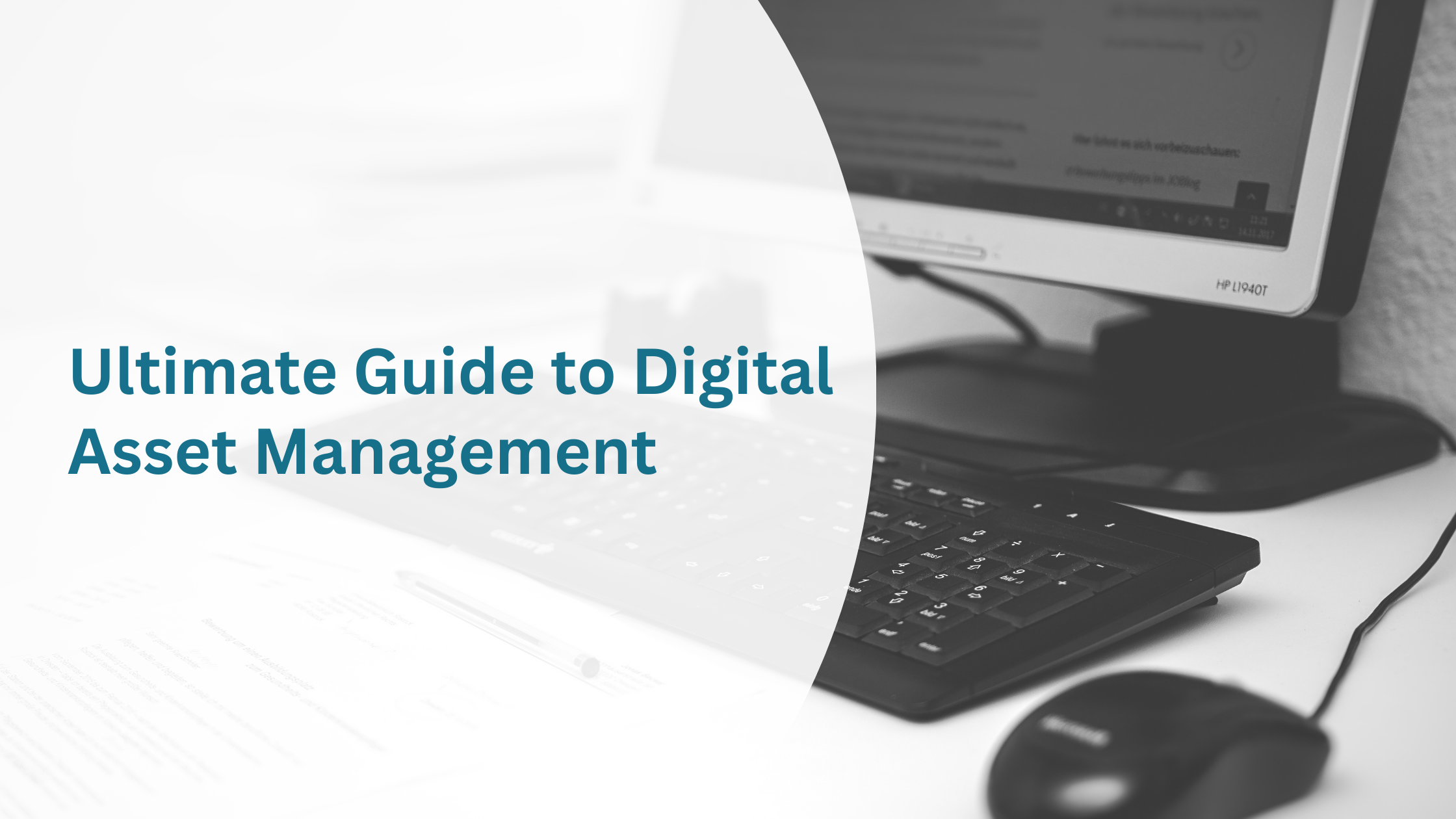OpenAsset Learning Hub
DAM vs. MAM: Difference and Definitions
Digital Asset Management (DAM) vs. Media Asset Management (MAM)
Digital asset management (DAM) and media asset management (MAM) are often used interchangeably, but they differ in very specific and important ways. This guide has everything you need to understand the differences between DAM and MAM, and decide which solution is best for your business.
What is Digital Asset Management (DAM)?
Digital asset management (DAM) is the process by which organizations store, share, organize, find, and retrieve digital assets from their ever-growing library of content, rich media and digital materials – things like images, videos, audio files, branding material, presentations, proposals and more.
In other words, digital asset management is how organizations keep, utilize and distribute the digital assets they need to grow their brand, empower their sales teams, improve brand consistency and disseminate a clear and purposeful message to their audience.
How Does a Digital Asset Management Platform Work
Digital asset management software works by creating workflows that enable your team to find, store and share the files they need to work most effectively. To simplify the search for assets, DAM solutions utilize metadata to identify digital content with attributes and specific keywords.
These identifiers create an index used to group and categorize assets by common tags (e.g. whitepaper, eBook, etc.), media type (e.g. video, image, etc.) and technology used (e.g. Photoshop, Canva, etc.) to improve searchability. In other words, a DAM system works by creating agile workflows that enable your team to find, use and share your digital assets faster and easier than ever before.
Benefits of a Digital Asset Management System
A successful digital asset management system offers much more than a simple repository for digital files. It enables your team to organize assets in a way that makes the most sense for your business.
Consolidate Digital Assets Into One System
Large media libraries make it difficult for team members to find and use valuable digital assets like branded videos, logos and images. A digital asset management system alleviates that problem by providing one centralized location where users can find, store and share the digital assets they need.
Repurpose and Reuse High Performing Content
DAM systems provide a birds-eye-view of your digital asset library, enabling your marketing team to extend the value of media assets and identify high-performing content to reuse, repurpose, and adapt for other creative purposes.
Improve Collaboration With Team Members and Vendors
Workplace chat software like Slack is a great way to communicate internally with colleagues, but it does not provide the kind of interagency collaboration facilitated by a digital asset management system.
A DAM system like OpenAsset enables users to share assets with internal and external partners without additional software. This improves collaboration, and reduces time-to-market for important campaigns.
If you would like to learn more about marketing technology, our guide on how to build a marketing tech stack explores the subject in greater detail.
Track the Performance of Content and Valuable Digital Assets
A digital asset management system enables your team to measure and report on the usage and performance of digital assets across different channels, and/or consolidate performance reports across product category, geography, and audience segment. In other words, a DAM makes it easier for your team to create customizable usage reports and track brand assets wherever they’re activated.
Streamline the Content Creation and Media Distribution Process
As your business grows, your content and digital asset library will increase exponentially. A digital asset management solution can streamline this process and serve as an incubator for all branded content, enabling teams to ideate, create, share, and manage assets from inception to publication.
Support Sales and Marketing Channels
Sales and marketing need to collaborate on mission critical content, and distribute high-converting assets like datasheets and customer success stories. The right DAM system enables marketing and sales to communicate and transfer valuable digital assets with speed, ease and efficiency.
Automate Repetitive Tasks and Consolidate Redundant Tools
Ultimately, much of the value that a DAM provides is found in the number of redundant tools, tasks and capabilities that it consolidates into one system, enabling your team to focus on strengthening your brand and growing your business.
Drawbacks of a Digital Asset Management
Digital asset management systems replace the value-sapping disorganization of traditional media libraries with order, efficiency and collaboration. In that regard, there are no drawbacks to using a digital asset management system, unless you choose the wrong DAM system for your business. Fortunately, our guide on how to choose the right digital asset management system has everything you need to choose the right DAM for your business.
What is Media Asset Management (MAM)
Media asset management (MAM) refers to the storage and administration of large-sized multimedia files like videos, audio and time-based digital assets. Though similar to digital asset management in functionality, the primary difference between DAM and MAM is the type of media they manage, and the value that they provide to different industries.
Industries that favor video production (news, sports, post-production, film production, etc.) will benefit more from a media asset management system than they would a digital asset management system, which is more applicable to other industries, like architecture, engineering and construction (AEC).
How Does a Media Asset Management Platform Work
Media asset management platforms work much the same way as digital asset management platforms, but focus exclusively on the storage and administration of video files. As such, most users consider DAM to be a more versatile tool as it tends to offer the same video management features without limiting users to one type of media.
Benefits of a Media Asset Management
Unlike more general-purpose digital asset management systems, most media asset management solutions will integrate tools and applications built specifically for video production, including:
- ingest tools,
- video editing suites,
- visual effects,
- graphics tools,
- transcode,
- quality assurance,
- file transport,
- specific distribution systems,
- and more.
Drawbacks of a Media Asset Management
Though media asset management systems provide in-depth management of video files, they lack the ability to effectively manage, preview and distribute smaller files, like documents, images and PDFs.
That makes MAM a great solution for production teams, but a less viable option for marketing and creative teams, who require the wider breadth of management capabilities that a DAM can provide.
Use cases for DAM
From architecture, engineering and construction (AEC), to real estate, marketing, manufacturing and design, the use cases for digital asset management software are numerous and cover a range of different industries, including:
- Technology
- Education
- Real Estate
- Construction
- Engineering
- Architecture
- Design
- Manufacturing
- Marketing
- Retail and eCommerce
- Nonprofits
- Hotels and Resorts
- Tourism
- Local Government
In fact, any brand looking to increase efficiency, maintain brand consistency and maximize the effectiveness of their team would benefit from the use of a digital asset management solution.
Use cases for MAM
The primary uses cases for media asset management systems are found in industries that rely heavily on video production, such as:
- News
- Sports
- Film Production
- Music Production
- Television
- Public Relations
- etc.
DAM vs MAM: What Solution is The Best for My Business
If you need tight integration with video editing and production tools, then a dedicated MAM should be on your shopping list. Otherwise, a digital asset management system provides more versatility, functionality and value than a media asset management system.
More importantly, DAM systems do not limit your team one type of media file. In fact, a project-based DAM solution like OpenAsset not only makes it easier to manage your images, it enables your team to respond to RFPs faster, and create better proposals that win more business.
Why Your Business Needs a DAM Solution
As your business grows, the number of media files and digital assets you need to build your brand and win more business will only increase. The larger your media library, the harder it becomes to maintain brand consistency, and disseminate a clear and purposeful message to staff, clients, and partners. In other words, the more digital assets you have, the harder it becomes to:
- find, share and store valuable digital assets;
- present a consistent brand image;
- collaborate with internal teams and external vendors;
- monitor the performance of branding, marketing and sales material;
- manage usage rights and licensing’
- create proposals;
- respond to RFPs, and
- generally function as a business.
Fortunately, DAM systems like OpenAsset are designed with the user in mind. That user-centric approach enables your team with the capabilities they need to overcome common challenges.
Limited Access to Digital Assets
If you’re not using a DAM, then chances are that your digital assets are being utilized incorrectly by the wrong people. DAM systems like OpenAsset enable your team with a centralized solution and established workflows to regain control over digital assets, manage access and streamline the approval process.
Misallocation of Time and Budget
If your team wastes precious time searching for mislabeled assets, that’s time lost that they could be spending focused on growing and scaling your business. Empower them with a centralized platform that makes the organization, monitoring, and maintenance of every asset in your ecosystem easy and efficient.
Disconnected Workforce
DAM systems enable you to break down silos and enhance communications across your organization by providing a unified platform designed to boost collaboration, and enable teams to democratize assets, create agile workflows, and improve consistency across all channels.
Failing Brand Standards
You can address failing brand standards by integrating with a DAM that serves as a single source of truth for all brand assets, improves information security and enables teams to store, organize, share, search, and grow their digital library.
How To Choose The Right DAM Solution for Your Business
The right DAM for your business is going to be the one that provides the greatest functionality for your team. For firms in the built world, that means a project-based workflow that enables your team to not only find, store and share digital assets, but also improve the strength of your brand and create high-quality RFP responses that win more business.
Designed specifically for firms in the built world, OpenAsset is the preferred project-based DAM solution for architecture, engineering, construction and real estate firms across the world. Follow the link to learn more or schedule a demo.


